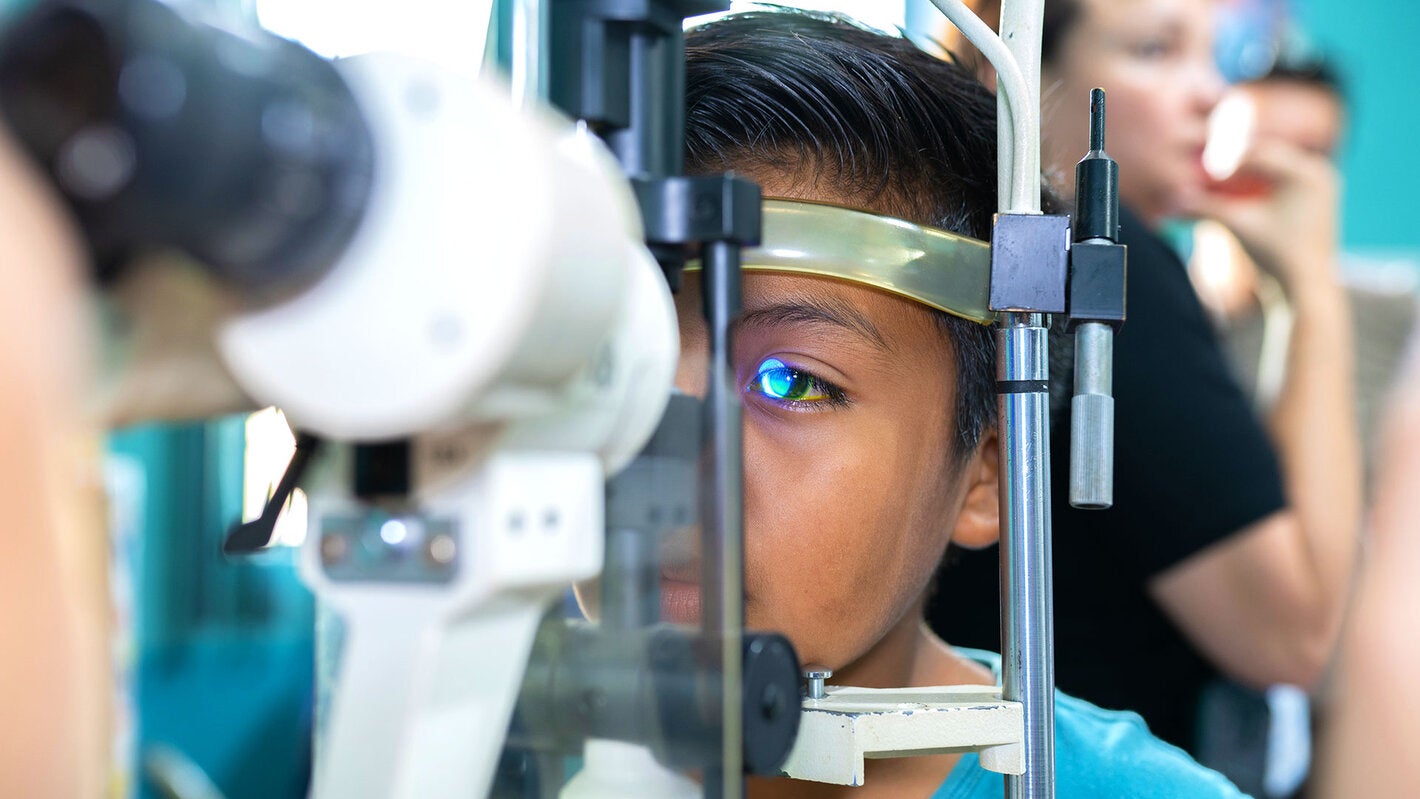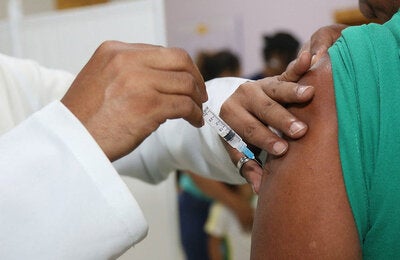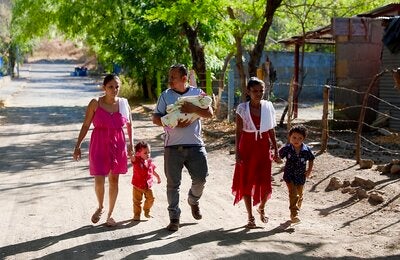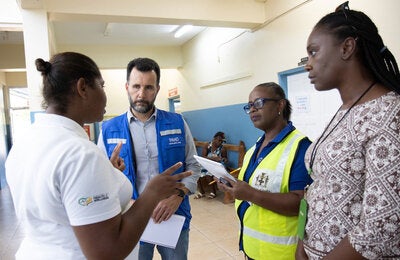
"Get your eyes tested" is the theme of this year's World Sight Day
Washington, D.C., 10 October 2013 (PAHO/WHO) - Eight in 10 cases of blindness and visual impairment could be prevented if everyone had access to comprehensive eye care, experts at the Pan American Health Organization/World Health Organization (PAHO/WHO) said on the occasion of World Sight Day, Oct. 10.
"The vast majority of cases of blindness and impaired vision are entirely preventable," said Dr. Juan Carlos Silva, PAHO/WHO regional advisor for visual health. "For individuals, this means they must be sure to get regular eye check-ups. For governments, it means they have a responsibility to ensure that everyone has access to treatment and care."
In Latin America and the Caribbean, the chief causes of preventable blindness include cataracts, diabetes, and the tropical parasitic diseases trachoma and onchocerciasis (also known as "river blindness"). Cost-effective prevention or treatment is available for all of these:
- Cataracts, which account for about 50% of blindness both globally and in the Americas, can be corrected through surgery that costs as little as $25 in developing countries.
- Diabetic retinopathy—which affects upwards of 75% of patients who have had diabetes for more than 20 years—can be controlled through appropriate treatment, reducing the risks of blindness or moderate vision loss by 90%.
- Trachoma and onchocerciasis can be treated for as little as 57 cents, thanks to drug donations and public-private partnerships. Trachoma and other conditions that lead to blindness can also be prevented by ensuring access to clean water.
- Blindness due to glaucoma can usually be prevented through screening and appropriate treatment.
The Pan American Health Organization/World Health Organization (PAHO/WHO) has been working with its member countries to improve prevention of blindness and visual impairment through the development and implementation of national policies and programs on visual health and the integration of eye care into existing health programs and services. PAHO/WHO partners in this work include Sight Savers, the Caribbean Council for the Blind, ORBIS International, Christian Blind Mission (CBM), the International Eye Foundation, and the International Agency for the Prevention of Blindness (IAPB).
Many countries in Latin America and the Caribbean have made significant progress in this area since the adoption in 2009 of a Regional Plan of Action on the Prevention of Avoidable Blindness and Visual Impairment. For example:
- 19 countries have designated health officials in charge of visual health in their ministries of health, a sharp increase from 2008, when only seven countries had done so.
- 9 countries have completed glaucoma public education programs.
- 13 countries have premature retinopathy programs.
- 21 countries have low-vision services.
In May of this year, the World Health Assembly approved a new global Action Plan for the Prevention of Avoidable Blindness and Visual Impairment 2014-2019, which calls on WHO Member States worldwide to exert leadership in formulating policies, norms and laws to promote visual health. The plan promotes universal coverage for ocular health through the use of networks, defined service packages, and strengthening of primary health care. It also calls for improved reporting and information systems and for the deployment of trained health-care workers to assist vulnerable populations, where the majority of visual impairment is concentrated.
"With the passing of this global plan, we are entering a new era of blindness prevention and visual health," said Dr. Gina Tambini, director of PAHO/WHO's Family, Gender and Life Course department.
PAHO, founded in 1902, is the oldest international public health organization in the world. It works with its member countries to improve the health and the quality of life of the people of the Americas. It serves as the Regional Office for the Americas of WHO and is part of the Inter-American system.



